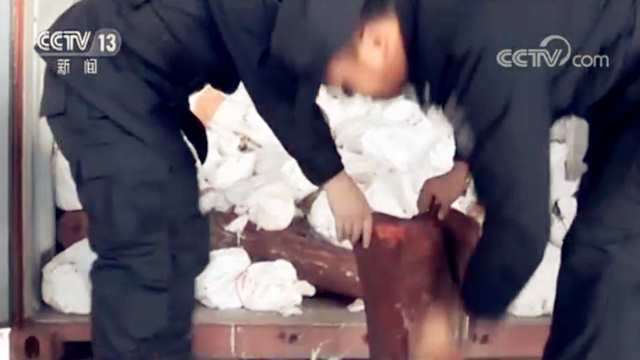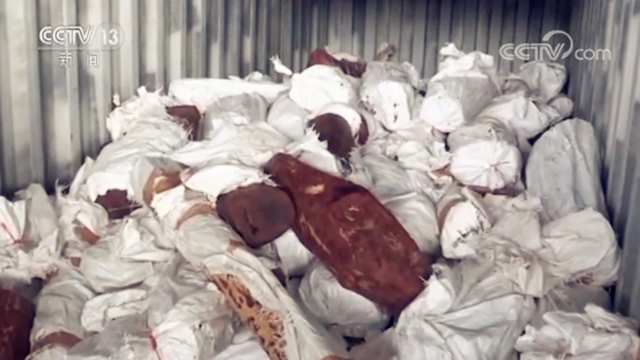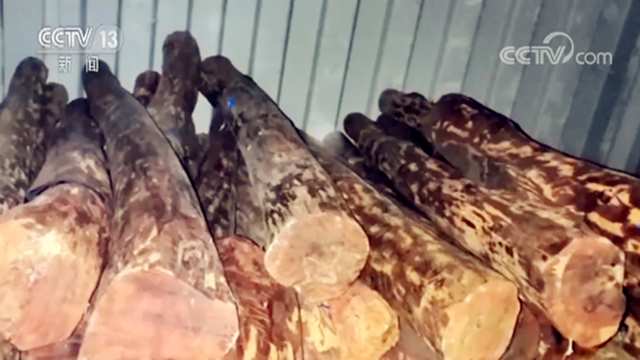Some of them are between 150 and 300 years old, and each of them has an identity certificate. The customs cracked a major smuggling case.
CCTV News:Recently, under the command of the Anti-smuggling Bureau of the General Administration of Customs, Shanghai Customs launched a special campaign against smuggling and importing endangered species. Three gangs specializing in the smuggling and import of lobular rosewood were destroyed, seven suspects were arrested, and more than 50 tons of lobular rosewood were seized on the spot.
During the investigation, it was found that a number of gangs specializing in smuggling lobular rosewood organized goods from abroad and smuggled a large number of lobular rosewood originating in Southeast Asian countries into the country by tampering with the name and source of the goods.

Wang Weifeng, Deputy Chief of Yangshan Customs Inspection Section, said: "Its loading port, that is, the last port to enter China, is Singaporean, but its declared country of origin is Zambian. Then from the perspective of routes, Zambia itself is on our ocean route. "
This detour route has attracted the attention of the relevant customs departments. At the freight container terminal of Shanghai Yangshan Port, the customs anti-smuggling personnel unpacked and inspected a container that had been pre-controlled. It is found that each piece of wood in the container has a separate package and number.

Shang Linlin, deputy section chief of Yangshan Branch of Shanghai Customs Anti-smuggling Bureau: "There is a number on the back of this package. When we opened the package, there was also a number on the wood. It should be the delivery time of the other party. In order to prevent the goods from being lost or damaged, each piece of wood is numbered. Because this thing is of higher value. "
Pterocarya microphylla belongs to a small tree of evergreen family, most of which grows in tropical and subtropical virgin forests, and there is also a very small amount of growth in Yunnan, Guangxi and Guangdong in China. From the material point of view, only the real Indian Pterocarya microphylla is a fine wood, and its color, density and fragrance are incomparable with other materials.

Wang Weifeng, deputy section chief of Yangshan Customs Inspection Section: "As can be seen from the cross section, the age of this wood is roughly between 150 and 300 years. Red sandalwood, ten sandalwood and nine empty, a thick wood like this, actually has no hollow inside, which is very precious and rare. "
After on-site inspection and later identification, all the 13 tons of wood in this container are lobular rosewood originating in India. According to the clue, the anti-smuggling personnel intercepted four containers of similar goods at the Shanghai port.

After verification, the anti-smuggling personnel confirmed that these lobular rosewood were suspected of smuggling and importing. The Shanghai Customs Anti-smuggling Bureau immediately organized police forces to arrest a number of target suspects for overseas cargo collection, customs clearance and transportation, and domestic sales.
After thorough investigation, the anti-smuggling personnel went deep into Xianyou County, Putian City, Fujian Province, and tracked and arrested one of the smuggling suspects. Near a residential area, when the suspect got off the bus and left, he saw someone approaching and suddenly accelerated to escape.

At the same time, anti-smuggling personnel also arrested four other suspects suspected of smuggling lobular rosewood in Zhangjiagang, Jiangsu and Shanghai respectively, and seized a number of relevant documentary evidence. Initially, it was found that several smuggling gangs smuggled lobular rosewood originating in India into the country for profit through overseas purchase, transportation clearance and domestic sales.

Wang Xuan, deputy section chief of Shanghai Customs Foreign Port Anti-smuggling Branch: "He will go to India to see the goods. Judging from his entry and exit records, it is still relatively frequent, and he will go to (India) to look at the goods every once in a while. Most of the goods are through WeChat pictures and small videos to see the approximate quality of the goods. "
After the container was delivered to China port, the gang in charge of customs clearance changed the Indian lobular rosewood into African-made dye rosewood without import license, and then applied to the domestic customs for import declaration. Since then, these goods have been transported to the high-grade timber distribution center in Xianyou, Fujian Province for sale.